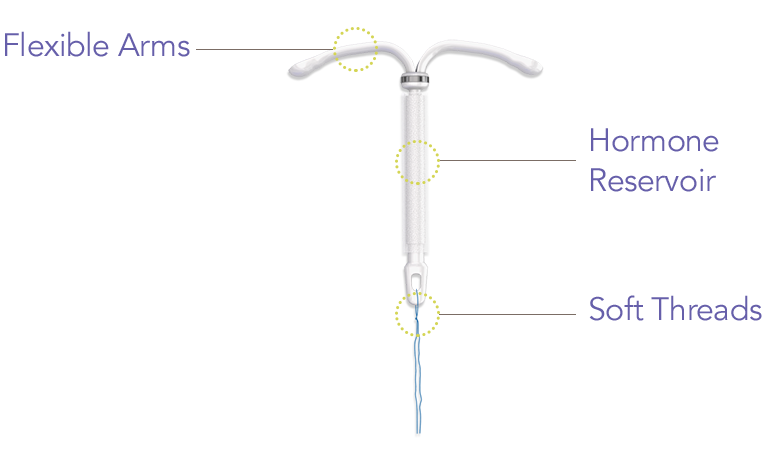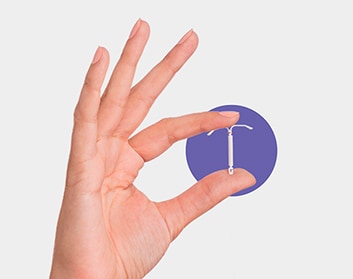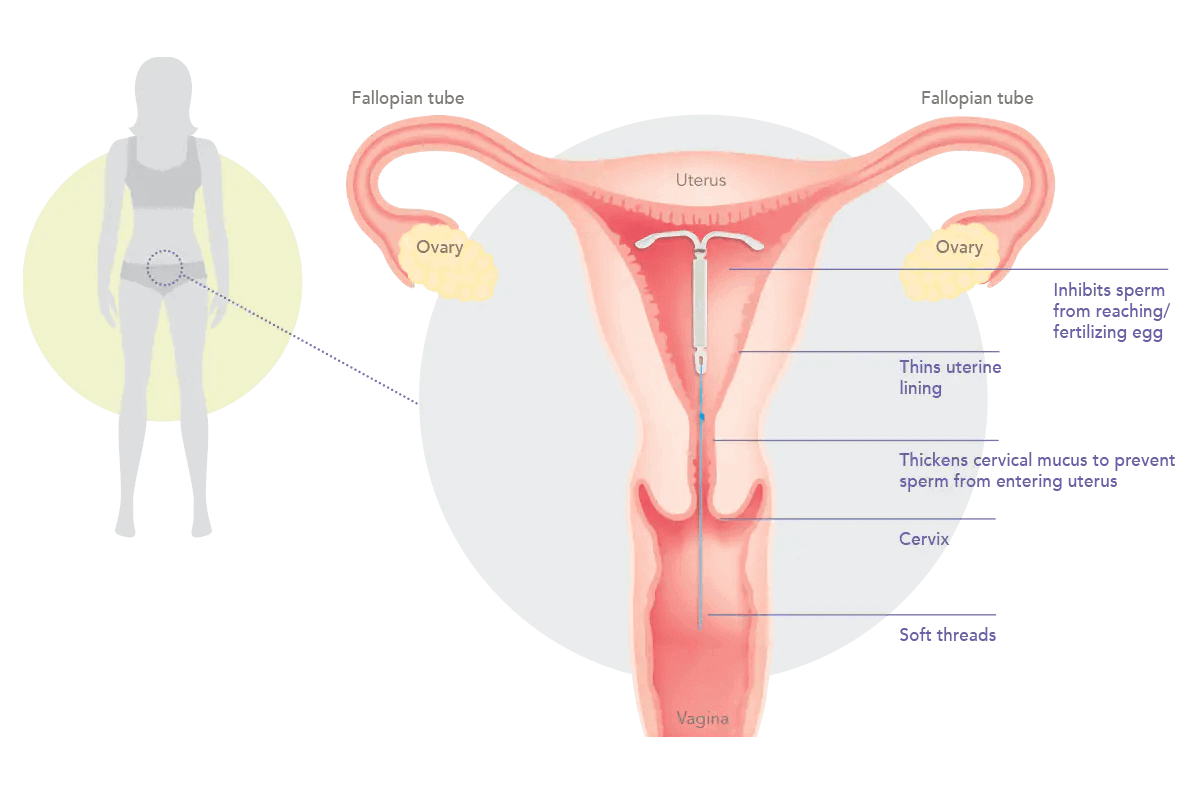What is Kyleena?
Kyleena is an Intrauterine System (IUS), which is a long-acting reversible contraceptive (LARC). It is highly effective at preventing pregnancy, with a failure rate of 0.2% in the first year. It works for 5 years, but can be removed sooner if you wish.
-
Is a small, flexible, plastic T-shape with a low hormone dose.
-
Kyleena is placed in the uterus by a healthcare professional to prevent pregnancy for up to 5 years.
-
Kyleena contains 19.5mg of a single hormone called levonorgestrel, a type of progestin, that is often used in birth control pills.
-
Because Kyleena slowly releases a continuous low dose of levonorgestrel into your uterus, only small amounts of hormone enter your bloodstream.
-
Does not contain oestrogen and does not affect normal function of your ovaries.

*Image not to scale

*Image not to scale
Effective, low-hormone birth control
-
Kyleena is over 99% effective at preventing pregnancy for each year of use, and 98.6% effective over 5 years1
-
That means less than 1 pregnancy per 100 women in a year, and less than 2 pregnancies per 100 women over 5 years1
-
Kyleena has the smallest T-body and narrowest insertion tube available in a 5-year IUS
How does Kyleena work?
Kyleena slowly releases a small amount of hormone, a progesterone called levonorgestrel.
As Kyleena is placed in the womb, it works right where it is needed and only small amounts of hormones will enter your bloodstream. Ovulation (the release of an egg from the ovaries) usually continues while using Kyleena.

*Image not to scale

*Image not to scale
How does Kyleena prevent pregnancy?
The hormone, levonorgestrel, that’s released into your uterus by Kyleena prevents pregnancy most likely by:
-
Thickening cervical mucus, preventing sperm from entering the uterus
-
Inhibiting sperm movement so it’s more difficult to reach and fertilize an egg
-
Thinning the lining of your uterus, making it less likely for an egg to attach to the uterus
It is not known exactly how these actions work together to prevent pregnancy.
Explore more
PP-KYL-GB-0130 January 2023
INDICATION FOR KYLEENA
Kyleena® (levonorgestrel-releasing intrauterine system) is a hormone-releasing IUS that prevents pregnancy for up to 5 years.
IMPORTANT SAFETY INFORMATION
- If you have an untreated genital infection, get infections easily, or have certain cancers, don't use Kyleena. Less than 1% of users get a serious pelvic infection called pelvic inflammatory disease (PID).
- If you have persistent pelvic or stomach pain, excessive bleeding after placement or if Kyleena comes out, tell your healthcare professional (HCP). If Kyleena comes out, call your HCP and avoid intercourse or use non-hormonal back-up birth control (such as condoms or spermicide). Kyleena may go into or go through the uterus and cause other problems.
- Pregnancy while using Kyleena is uncommon but can be life threatening and may result in loss of pregnancy or fertility.
- Ovarian cysts may occur but usually disappear.
- Bleeding and spotting may increase in the first 3 to 6 months and remain irregular. Periods over time usually become shorter, lighter, or may stop.
Kyleena does not protect against HIV or STIs.
Only you and your HCP can decide if Kyleena is right for you. Kyleena is available by prescription only.
For important risk and usage information about Kyleena, please see Patient information leaflet
Reporting adverse events and quality complaints
If you get any side effects talk to your doctor, pharmacist, nurse or healthcare professional. This includes any possible side effects not listed in this leaflet. You can also report side effects directly via the Yellow Card Scheme at https://yellowcard.mhra.gov.uk or search for MHRA Yellow Card in Google Play or Apple App Store. By reporting side effects you can help provide more information on the safety of this medicine. Please report information of when Kyleena was inserted and removed, as applicable.







